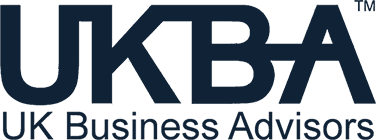
I’m often asked about alternative ways to raise funds for business expansion. SME’s still struggle to access finance through traditional routes such as bank loans but one way to access the finance you need is to take advantage of your assets.
Small and Medium-sized Enterprises (SMEs) are crucial drivers of economic growth and innovation. Nevertheless, they often encounter significant challenges in securing the necessary funds for expansion. Traditional sources of funding, such as bank loans and venture capital, may not always be readily available or suitable for every SME. This article looks into an alternative approach: harnessing your existing assets to raise funds for your small business’s growth. By utilising both tangible and intangible assets effectively, you can unlock new opportunities and propel your business to the next level.
Section 1: Assessing Your Assets
Before we explore strategies for leveraging your assets, it’s essential to take stock of what you already possess. Assets can be categorised into two main groups: tangible and intangible.
Tangible Assets
Tangible assets are physical assets owned by your business, including property, machinery, vehicles, stock, and cash on hand. To assess your tangible assets:
- Aged Debtors: Consider if invoice finance would help access cashflow from B2B invoices
- Inventory Management: Review your inventory to identify slow-moving or excess stock that can be sold or liquidated to generate immediate cash flow.
- Equipment and Machinery: Determine if you have unencumbered machinery or equipment that can be sold and leased back, or sold if underutilised to generate funds.
- Property: Evaluate the value of any owned property, such as office space or facilities. Consider selling and leasing back or leasing unused space.
- Cash Reserves: Assess your cash reserves and consider reallocating excess cash towards expansion efforts.
Intangible Assets
Intangible assets are non-physical assets that can be as valuable as tangible ones, including intellectual property, customer relationships, brand reputation, and proprietary technology. To assess your intangible assets:
- Intellectual Property (IP): Identify any patents, trademarks, copyrights, or trade secrets your business holds. IP can be licensed or sold to generate income.
- Customer Database: Leverage your customer database to increase sales or explore revenue-sharing partnerships.
Section 2: Leveraging Tangible Assets
Selling or Leasing Equipment and Inventory
One of the most direct ways to raise funds from your tangible assets is by selling or leasing excess equipment and inventory:
- Liquidation Sales: Host clearance sales or online auctions to sell slow-moving inventory or unused equipment, reinvesting the proceeds into your expansion plans.
- Equipment Leasing: Consider leasing out equipment you don’t currently need to generate revenue without permanently parting with your assets.
- Sale and Leaseback: Selling and leasing back your unencumbered assets to asset finance companies to generate additional cash for your business.
Property Monetisation
If your SME owns property, there are several options to unlock its value:
- Lease Unused Space: If you have extra office space or unused facilities, lease them to other enterprises for a steady stream of rental income.
- Sale and Leaseback: In this arrangement, you sell your property to an investor and then lease it back to free up capital for expansion.
Asset-Backed Loans
Another option for leveraging tangible assets is using them as collateral for loans, reducing the risk for lenders and making financing easier. Common forms of asset-backed loans include:
- Invoice Discounting: Access up to 90% of outstanding customer invoices, through getting an advance against these assets.
- Equipment Financing: Use your equipment as collateral for a loan to purchase additional assets or fund expansion projects.
- Inventory Financing: Pledge your inventory as collateral to secure a loan for working capital or expansion efforts.
- Commercial Property Loans: If you own commercial property, you can use it as collateral to secure a loan for business expansion.
Section 3: Leveraging Intangible Assets
Licensing Intellectual Property
If your business holds valuable intellectual property, such as patents or trademarks, consider licensing it to others in exchange for royalty payments:
- Patent Licensing: Allow other enterprises to use your patented technology in exchange for licensing fees, creating a source of recurring revenue.
- Trademark Licensing: License your brand for use in related industries or markets.
Joint Ventures and Partnerships
Leverage your intangible assets by forming strategic partnerships or joint ventures with other enterprises:
- Strategic Alliances: Collaborate with complementary enterprises to access their customer base or distribution channels, expanding your reach and revenue potential.
- Co-Branding: Partner with established brands to co-brand products or services, increasing your credibility and market share.
Franchising
If your business model is replicable and has a strong brand presence, consider franchising for expansion:
- Franchise Agreements: Allow individuals or enterprises to operate under your brand name in exchange for franchise fees and ongoing royalties.
- Regional Expansion: Expand your brand’s footprint by franchising in different geographic regions.
Section 4: Preparing for Funding Applications
Regardless of the assets you plan to leverage, thorough preparation is key when seeking funding for your SME expansion:
Create a Comprehensive Business Plan: Develop a detailed business plan outlining your expansion strategy, financial projections, and how you intend to use the funds to demonstrate commitment and vision to potential lenders or investors.
Financial Statements and Projections: Compile accurate financial statements, including profit and loss, balance sheets, and cash flow statements. Provide clear financial projections showing how the funds will impact your business’s growth and profitability.
Legal and Contractual Considerations: Ensure that any asset transactions, licensing agreements, or partnerships are legally sound and well-documented. Consult legal professionals if necessary to protect your interests.
Risk Assessment and Mitigation: Identify potential risks associated with leveraging assets and expansion plans, develop strategies to mitigate these risks, and communicate them in your funding applications.
Section 5: Choosing the Right Funding Sources
The success of your SME expansion efforts also depends on selecting the most appropriate funding sources. Here are some options to consider:
Banks and Traditional Lenders: Traditional banks and lending institutions may offer asset-backed loans or lines of credit based on your tangible assets, offering competitive interest rates and longer repayment terms.
Alternative Financing: Consider revenue-based financing or invoice factoring, which can provide funds based on current revenue or outstanding invoices.
Asset Sales and Licensing: If you are leveraging assets through sales or licensing agreements, negotiate favourable terms to ensure fair compensation for the use of your assets.
Peer-to-Peer Lending or Alternative Lenders: P2P lending platforms can be an option if you have a solid credit history and seek relatively small amounts of funding.
Strategic Partnerships and Joint Ventures: Strategic partnerships or joint ventures can provide funding and valuable industry expertise. Choose partners whose goals align with yours and bring complementary assets or skills to the table.
Government Grants and Subsidies: Local governments and councils offer grants, subsidies, or tax incentives to support SME growth and innovation. Research available programs in your region that align with your expansion plans.
Private Investors: Angel investors and venture capitalists may invest in your business if they see growth potential. Present your business plan and potential return on investment to attract private capital.
Section 6: Tips for a Successful Asset-Based Funding Strategy
To increase your chances of securing funds for SME expansion using asset-based strategies, consider the following tips:
Diversify Your Approach: Don’t rely solely on one asset or funding source. Diversify your approach by exploring multiple asset monetisation methods and funding options to spread risk.
Build Strong Relationships: Whether you’re seeking partnerships, joint ventures, or investor funding, building strong relationships is crucial. Demonstrating trustworthiness, reliability, and a commitment to mutual success can attract potential partners and investors.
Professional Guidance: Seek advice from commercial finance brokers and business consultants who specialize in financing and cash flow management. Their expertise can help you navigate complex transactions and ensure you make informed decisions.
Transparency and Disclosure: Be transparent with potential lenders or investors about how you plan to use their funds and any risks associated with the investment. Clear communication builds trust and confidence.
Protect Your Assets: Ensure that any agreements, contracts, or licensing arrangements adequately protect your assets and intellectual property. Legal counsel can help draft or review agreements that safeguard your interests.
Continuous Monitoring: Once you’ve secured funding, closely monitor your financial performance and the progress of your expansion project. Regularly assess whether you’re meeting your goals and make adjustments as needed.
Summary
Raising funds for the expansion of your small or medium-sized business can be a challenge, but leveraging your assets effectively can open doors to opportunities for growth. Whether you’re tapping into tangible assets like equipment and real estate or harnessing the power of intangible assets such as intellectual property and brand reputation, a well-thought-out strategy and careful planning are essential.
By assessing your assets, preparing comprehensive funding applications, and choosing the right funding sources, you can successfully secure the funds needed to take your SME to the next level!
